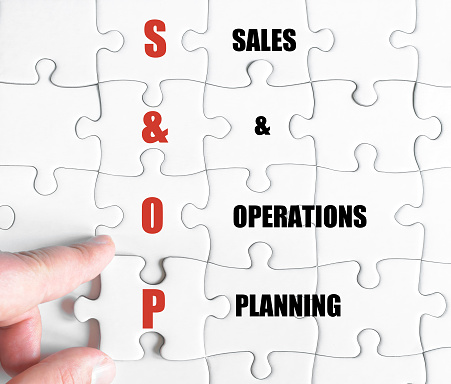Sales and Operations Planning (S&OP) helps companies optimize costs and plug the demand-supply gaps. But how well the supply chain works depends on the adaptability of the S&OP system. A proper plan can only lead to successful synchronization of the supply chain and effectively meet customer demands.
The system being adopted lately has gained foothold in mainstream supply chain. While some companies have chosen to apply S&OP only at some levels, there are many who have adopted and implemented a formal S&OP process across partners.
It is important to fix the multiple ‘what if’ scenarios that might pull down the demand in a supply chain. Decision makers may arrive at a consensus about executing an S&OP planning system once it provides a financial plan aligned with the company’s strategic goals.
What benefits does a successful S&OP structure bring to a company?
Other than improved services and increased effectiveness of brand promotions, S&OP helps reduce the gap between strategy and production. That alone takes care of many saving components that otherwise fell through the cracks.
A collaborative network: The latest technologies come with a singular platform for all functional lines such as design, operations, supply, sales, marketing, and other stakeholders to network, synchronize, and optimize business strategies. Such a collaborative platform can compile and store a set of data that the system can later use for interactive analysis.
Balancing the demand-supply chain: Companies can group various sections based on product types, customers, demographics, suppliers, etc., so that they can ensure accuracy in meeting a demand. The entire planning part impacts the business.
Timelines maintained: A sound S&OP process can actually keep margins in place. Timely execution of tasks by the right people on the right platform is vital. Activities and decisions can be documented and the system can make note of the changes in the demand-supply process for further analysis.
Analysis of business needs: A repository of data can be acquired from various departments of business in line with the S&OP structure. This data of demand, inventory, and planning production can help in the analysis of sales history to predict future market trends and challenges.
Key performance indicators: When a company sets certain goals, S&OP structures can help keep the organization aligned with it while monitoring parameters at a granular level.
Event alerts: S&OP processes can proactively alert decision makers, so that appropriate adjustments can be made if there are any deviations from the original plan of action. Decision makers can analyze the causes and then communicate with the right people for reviews and modifications.
Software can report sales, marketing outcomes, demand-planning outcomes, financial health, and procurement scores, and solve many challenges companies face in the absence of a proper S&OP process. The solutions can provide internal coordination between suppliers regarding mid and long-term volume planning.
Author Bio:-
Amy Jackson is a lead technology writer and she has an array of experience in Technology and software industry. Currently, she has been writing about supply chain planning systems, Predictive Analytics Solutions and procurement solutions. Follow her on Google+ and learn more about the latest tech trends.










Comments are closed.